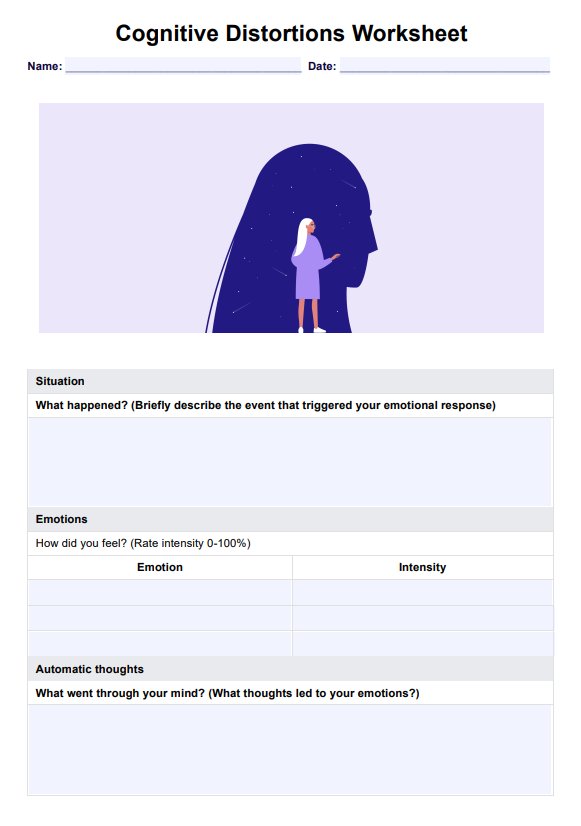There are numerous types of cognitive distortions. However, there are some main ones that you should be aware of, which include overgeneralizations, clients jumping to conclusions, black-and-white binary thinking, the magnification and minimization of experiences, and should statements. This is in addition to mental filters, where clients focus on negative events while ignoring the positive, disqualifications of positive events entirely, emotional reasoning, personalization, or the blame of oneself for events that are beyond one's control.

Cognitive Distortions Worksheets
Help clients investigate and challenge their automatic negative thought patterns and habits with our Cognitive Distortions Worksheet.
Cognitive Distortions Worksheets Template
Commonly asked questions
The client completes cognitive distortion worksheets. While it's perfectly acceptable for the mental health practitioner to transcribe the document for them, it is important that the client has the majority of the input.
This is a relative question, and it may take longer for some clients to complete the worksheet than others. However, as a general rule of thumb, the worksheets should take anywhere from 30 minutes to one hour. If you choose to incorporate the worksheets within your appointments, you may focus on them for most of your time.
EHR and practice management software
Get started for free
*No credit card required
Free
$0/usd
Unlimited clients
Telehealth
1GB of storage
Client portal text
Automated billing and online payments











